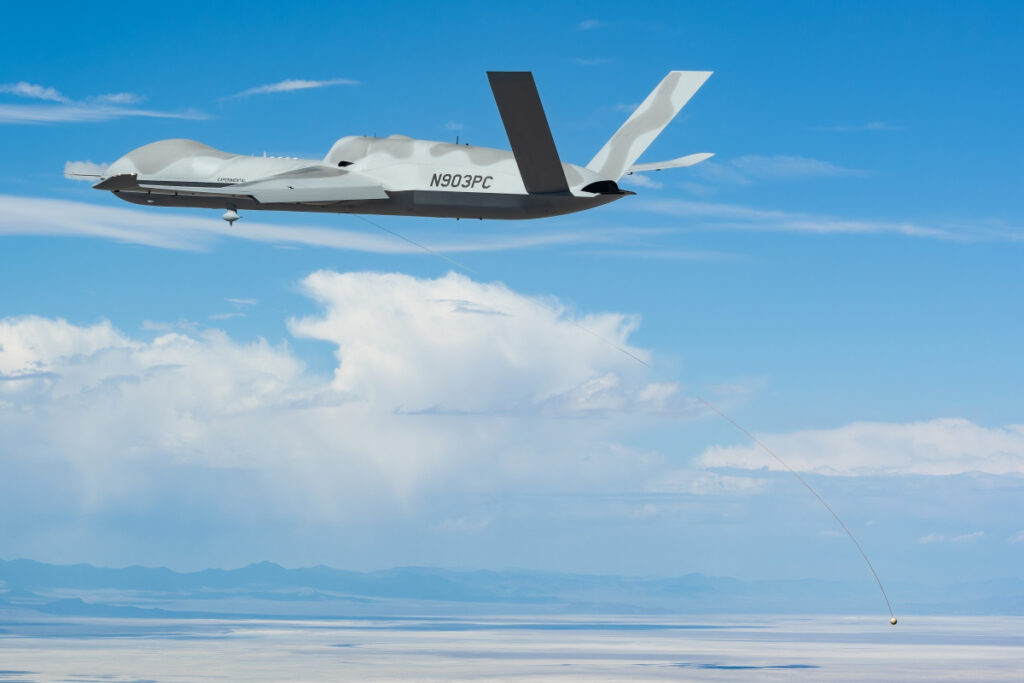General Atomics Aeronautical Systems Inc. (GA-ASI) has successfully tested a new recovery system that enables large drones to recover and redeploy smaller ones midflight.
Using a MQ-20 Avenger, the trial supports the maturation of the company’s Aerial Recovery System for Small Unmanned Aircraft Systems/Air-Launched Effects (SUAS/ALE).
Through the approach, strategic-level assets such as the MQ-20 or MQ-9A Reaper can be leveraged as mobile command centers for a swarm of SUAS/ALE systems to expand surveillance, electronic attacks, communication, and adversarial air defense suppression.
GA-ASI wrote that the SUAS/ALE can also be used for applications such as aerial refueling, recharging, and rearming.
Testing SUAS/ALE Recovery System
During the demonstration, a hoist manufactured by Breeze-Eastern was integrated into the MQ-20’s payload bay.
The hoist’s towline incorporates a “smart end feature” which detects its own position in relation to the Avenger. In flight, the towline was deployed away from the MQ-20 and to an optimal distance to simulate a recovery scenario.
The hoist was able to wirelessly transmit its position to the Avenger, confirming its ability to link data to a nearby drone for future SUAS/ALE recovery missions.
GA-ASI Advanced Programs VP Mike Atwood said that the demonstration validated the concept of combining smaller drones with bigger unmanned aircraft through “advances in relative navigation technology, complex towline analysis, and multi-aircraft control” exhibited in the Dugway trial.
“We are excited to see this technology enable long-range kill chains from today’s manned and unmanned systems supporting operations in highly contested environments,” he stated.



